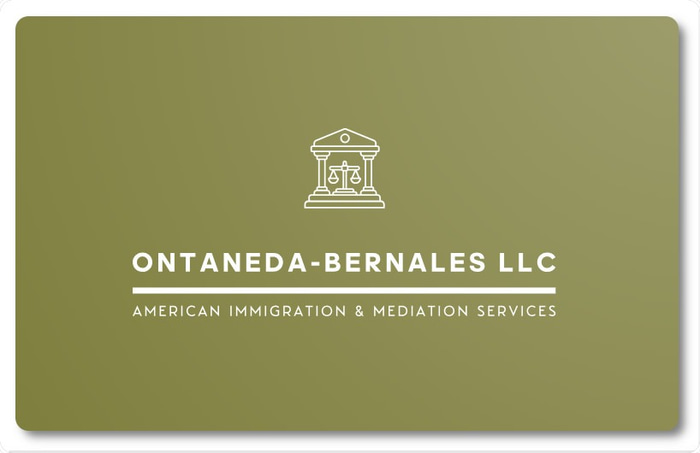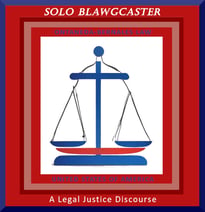Employment & Investor Visas


EB-1 visas (First Preference): For individuals with exceptional skills and talent.
Subcategories:
Extraordinary ability (e.g., in science, arts, education, business, or athletics).
Outstanding professors and researchers.
Multinational managers and executives.
Generally require high levels of achievement and a strong record of success in their field. It may be easier to obtain a green card due to higher priority and less competition.
EB-2 visas (Second Preference): For professionals with advanced degrees (or equivalent) or exceptional ability.
National Interest Waiver (NIW): A subcategory within the Second Employment-Based Preference Category (EB-2). May require a job offer or a PERM labor certification, unless qualifying for the NIW. May be a more accessible path for some professionals, especially those with advanced degrees or exceptional abilities who can obtain a NIW.
The JOB OFFER and LABOR CERTIFICATION requirements may be waived if the petitioner can show that his skills will substantially benefit the U.S.
To apply for the exemption, the petitioner must submit the I-140, along with a Form ETA 750B, Statement of Qualifications of Alien, in duplicate, and evidence to support the claim that such exemption would be in the national interest. Such evidence includes:
letters from experts familiar with Petitioners work
educational credentials
published works;
awards or other recognition for achievements in the field;
memberships in exclusive professional associations.
A pathway to bypass the need for an employer sponsorship if the applicant's work is deemed of national interest.
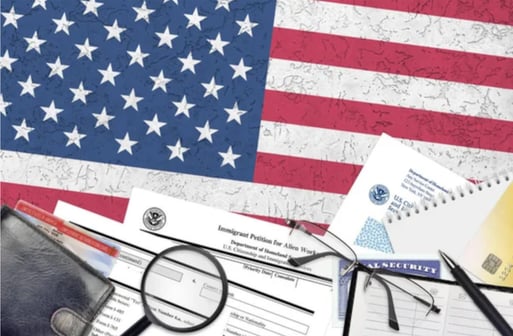



For Australians, Canadians, & Mexicans
For Traders & Investors
H-1A visa: for foreigners coming to perform services as registered professional nurses. H-1B visas are now used more often for nurses.
H-1B visas: for foreigners that temporarily perform services and can be used for the following:
specialty occupations that require the theoretical and practical application of a body of knowledge to fully perform the occupation and require completion of a specific course of education culminating in a baccalaureate degree in a specific occupational specialty. The term "specialty occupation" is defined under U.S. law in the context of the H-1B visa program. For instance, specialty occupation workers include architects, accountants, engineers, lawyers, physicians, and surgeons (to name a few). Fashion models are exempted from the degree requirements
to perform services of an exceptional nature relating to a cooperative research and development project administered by the United States Department of Defense.
an artist, entertainer, or fashion model who has national or international acclaim and recognition for achievements, individually or, in the case of entertainers, as part of a group, to be employed in a capacity requiring someone of distinguished merit and ability.
an artist or entertainer, individually or as part of a group, in a unique or traditional art form.
athletic competition as an athlete, individually or as part of a group or team, at a nationally or internationally recognized level of performance.
accompanying support personnel who are highly skilled aliens coming temporarily as an essential and integral part of the competition or performance of an H-1B artist, entertainer, or athlete because they perform support services that cannot be readily performed by a US worker and that are essential to the successful performance or services of the H-1B.
The petition MUST be filed by the US employer with an approved LCA from the DOL, plus
evidence that the proposed employment qualifies as within a specialty occupation.
evidence that the alien has the required degree by submitting
a copy of the person's US baccalaureate or higher degree, which is required by the specialty occupation;
a copy of a foreign degree and evidence it is equivalent to the US degree or evidence of education and experience which is equivalent to the required US degree;
a copy of any required license or other official permission to practice the occupation in the state of intended employment; and,
a copy of any written contract between you and the alien or a summary of the terms of the oral agreement under which the alien will be employed.
E-3 visa: for Australian nationals who enter the U.S. temporarily to work in a specialty occupation. To be eligible for the E-3 visa, an Australian national must be entering the United States temporarily to work for a U.S. employer in a specialty occupation. Australian nationals and their dependents traveling to the U.S. under E-3 visas will be admitted for up to two years. The E-3 visa may be renewed for two-year periods indefinitely.
allows Australian nationals to work for any U.S. employer in a specialty occupation, where this is accompanied by a job offer. For this reason, it is different from the current E-1 and E-2 visas, which require a direct and significant link between the occupation and international trade and investment between the United States and Australia.
affords entry to the professional worker as well as the worker's spouse and minor children. Significantly, unlike many U.S. non-immigrant visas, the E-3 visa allows spouses to apply for authorization to work in the United States for any U.S. employer.
It has no impact upon the ability of Australians to apply for other visa categories. In addition, current H-1B and E visa holders may apply for an E-3 visa, and E-3 visa holders remain eligible to apply for any other visa.
For Temporary Employees (Non-Immigrant)
P visas: used for aliens coming temporarily to perform as an artist or entertainer, individually or as part of a group, under a reciprocal exchange program between an organization in the US and an organization in another country.
P-1 visa classification is a work visa that applies to individual or team athletes or members of an entertainment group that are internationally recognized (annual limit: 25,000).
P-2 visa classification is a work visa that applies to artists or entertainers who will perform under a reciprocal exchange program.
P-3 visa classification is a work visa that applies to artists or entertainers who perform within a program that is culturally unique (same as P-1).
R visas: for foreigners who have been members of a legitimate religious denomination for at least two years and also have a job offer in the U.S. to work for an affiliate of that same religious organization. Along with submitting Form I-360, the immigrant Religious Worker should provide the following documents:
Proof that your religious organization is a non-profit organization.
A letter from an official of your religious organization in the U.S. stating that you have been a member of the denomination for at least two years and that you have at least two years of experience in your vocation or occupation. The letter should also state certain details about your particular type of vocation or occupation.
This letter should also state how you will be paid for your work and that you do not intend to supplement your income with a second job or depend on charity for support.
H-2A visa: for persons who come to the U.S. to perform agricultural labor or services on a temporary or a seasonal basis, while the H-2B visa is for temporary workers performing non-agricultural temporary services or labor. The H-2A is a very detailed program, setting out the wages that must be paid, the free and approved housing that must be offered to US and foreign workers, including the size of the windows and the density of the screens on them, the work guarantees, and the requirements that must be satisfied for workers to have their transportation reimbursed.
H-2B visa: a program similar to the H-2A program but without the housing, AEWR, and other worker protections spelled out in detail.
H-3 visas: for Temporary Trainees that come to the U.S. for on-the-job training to be provided by a U.S. employer. The purpose of the training should be to advance their career in their home country, where they plan to return to and where similar training opportunities are unavailable.
I visa: for foreign press, radio, film, or other foreign information media personnel.
TN (NAFTA): Under the North American Free Trade Agreement (NAFTA), certain citizens of Canada and Mexico are eligible to enter the U.S. under the non-immigrant TN status. The TN Visa enables Canadian and Mexican citizens to temporarily work in the U.S. in a NAFTA-approved professional occupation. The TN visa is similar to the H-1B specialty occupation visa, except that there is no statutory limitation on the term of stay, and it generally covers a broader range of job categories. Generally, it is approved instantly with no review process for Canadians, but it may require an LCA for Mexicans. The following are the requirements to be eligible for the TN Visa:
The profession must be on the NAFTA list.
Foreign nationals must possess the necessary training for that profession.
The proposed position must be classified as a professional position.
Foreign nationals must work for a U.S. employer.
Canadian citizens may apply for the TN-1 Visa, and Mexican citizens may apply for the TN-2 Visa. The process to obtain a TN-2 visa is more complicated than that of the TN-1.
Spouses and/or unmarried children under the age of 21 are eligible to enter the U.S. under the derivative TD-1 and TD-2 visas.
Family members are not required to be Canadian or Mexican citizens and are eligible to remain in the U.S. for the duration of the TN visa holder's stay. They may either accompany the TN Visa holder to the U.S. or come at a later time.
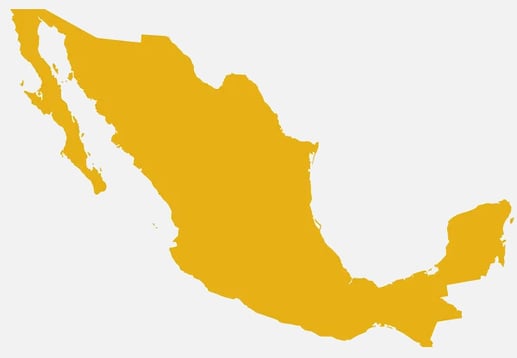





TN-2 Visa: Mexican citizens are eligible to apply for the TN-2 Visa. Interested applicants must meet the following requirements:
The sponsoring employer must file a Labor Condition Application with the Department of Labor (DOL).
The employer must also file a petition for non-immigrant workers on Form I-129 with the US Citizenship & Immigration Services.
After approval of the petition, the foreign national must apply for a non-immigrant visa at a U.S. consulate in Mexico.
TN-1 Visa: Canadian citizens applying for the TN-1 Visa must provide the following information at a U.S. port of entry:
An official request for TN status.
Copies of all relevant college degrees and employment records. This data should prove the applicant is sufficiently qualified for the proposed position.
An offer of employment letter from the sponsoring employer.
Proper processing.
Canadian citizens need not obtain labor certification. They must simply obtain TN status at a port of entry after sufficiently proving that the proposed stay is of a temporary nature and providing the following evidence:
Copies of all relevant college degrees and employment records. This data should prove the applicant is sufficiently qualified for the proposed position.
E visas: Designed for use by business managers, investors, business owners, and employees who are required to stay in the United States for prolonged periods of time to oversee the operations of their business or work for an enterprise that is engaged in trade between the U.S. and a foreign country that has a treaty with the US (E-1) or that represents a substantial investment in the United States (E-2).
The E visa may be obtained from the U.S. Consulate located in the country where the foreign national is a citizen or from within the United States by applying for an E status. The E visa is initially valid for two years but may be extended almost indefinitely provided that the E status holder declares that he or she will leave the United States once the period of authorized stay, including any unlimited extensions, terminates.
E-1 Treaty Trader: The applicant must be a national of a treaty country. The trading firm for which the applicant is coming to the U.S. must have the nationality of the treaty country.
The international trade must be "substantial" in the sense that there is a sizable and continuing volume of trade. The trade involved must be between the U.S. and the country of the applicant's nationality. Trade means the international exchange of goods, services, and technology. The title of the trade items must pass from one party to the other.
The applicant must be employed in a supervisory or executive capacity or possess highly specialized skills essential to the efficient operation of the firm. Ordinary skilled or unskilled workers do not qualify.
EB-5 visa: Investment (Employment Creation) is a category that includes persons who plan to invest in a new enterprise that will benefit the economy of the United States. The commercial enterprise must create at least 10 jobs and meet a certain required minimum capital investment that may vary depending on the location of the enterprise. Immigrant investors who qualify for the employment creation category are admitted to the US on a conditional basis, and their investment is reviewed after two years.
The EB-5 Visa provides the most flexible path to a green card based on a US investment. The EB-5 visa does not require the applicant to manage the day-to-day affairs of a business. One may invest in an existing business or a new business. More than one person may invest in the same business. The EB-5 investor may be a minority owner of the business. One may qualify for an EB-5 as follows:
Invest $1 million and hire ten employees anywhere in the USA
Invest $500,000 and hire ten employees in an area where the unemployment rate exceeds the national average unemployment rate by 150%
Invest in a regional center -- INS designated specific areas, called Regional Centers, as eligible to receive immigrant investor capital. INS approved over 20 regional centers. Regional Center investors may rely on indirect job creation rather than directly hiring ten employees. A competent professional, such as an economist, must quantify the indirect employment. If the regional center is in a high unemployment area, the required capital is reduced to $500,000.
Of the 10,000 investor visas (i.e., EB-5 visas) available annually, 5,000 are set aside for those who apply under a pilot program involving an INS-designated "Regional Center." To date, the quota has not been exceeded.




L-1 visas: used to transfer aliens to the U.S. to work for U.S. firms, corporations, or other legal entities or their affiliates or subsidiaries of a company that already employs them outside of the U.S. There are two kinds of L visas. Spouses and children of L-1's enter the U.S.A. with L-2 visas.
L-1A is intended for managerial-level aliens to reside and work in the United States. It is important to HIGHLIGHT the distinction between L-1A and L-1B.
L-1A managers are considered priority workers for the purposes of immigration. Therefore, an L-1A employee may apply for permanent residency as a priority worker without having to obtain Labor Certification. As a priority worker, the L-1A employee would leapfrog the processes of Labor Certification, resulting in considerable savings of time and money. The L-1A becomes a very attractive route for multinational executives who wish to permanently reside in the United States.
L-1B: for technical workers, such as engineers, etc., to reside and work in the United States. L-1Bs, as technical staff, are not similarly considered as L1As. The L-1B technical worker may not skip the Labor Certification process.
O-1/O-2/O-3: for Extraordinary Ability positions in the field that require outstanding achievements as judged by recognized international experts; published material in professional or major trade publications or newspapers about the alien and his work in the field; participation on a panel or individually as a judge of the work of others in the field or an allied field; original scientific or scholarly research contributions of major significance in the field; authorship of scholarly articles in the field in professional journals or other major media; or evidence the alien commands a high salary or other high remuneration for services.
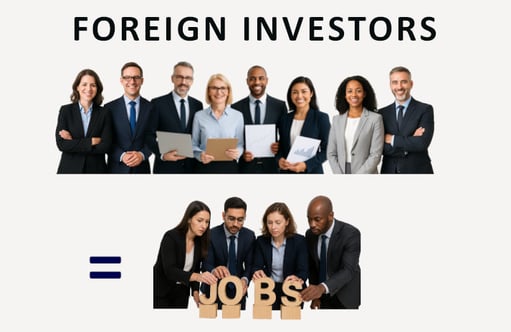

The North American Free Trade Agreement
E-2 Treaty Investor: The investor, either a real or corporate person, must be a national of a treaty country.
The investment must be substantial. It must be sufficient to ensure the successful operation of the enterprise. The percentage of investment for a low-cost business enterprise must be higher than the percentage of investment in a high-cost enterprise.
The investment must be a real operating enterprise. Speculative or idle investment does not qualify. Uncommitted funds in a bank account or similar security are not considered an investment.
The investment may not be marginal. It must generate significantly more income than just to provide a living to the investor and family, or it must have a significant economic impact in the United States.
The investor must have control of the funds, and the investment must be at risk in the commercial sense. Loans secured with the assets of the investment enterprise are not allowed.
The investor must be coming to the U.S. to develop and direct the enterprise. If the applicant is not the principal investor, he or she must be employed in a supervisory, executive, or highly specialized skill capacity.
Ordinary skilled and unskilled workers do not qualify.
